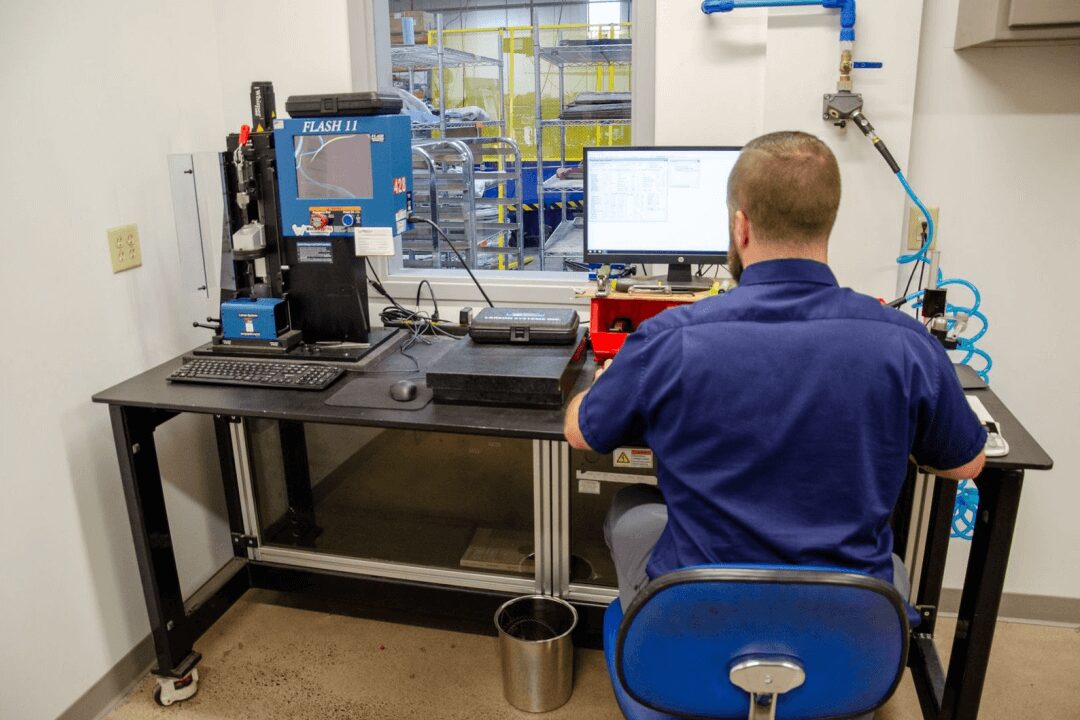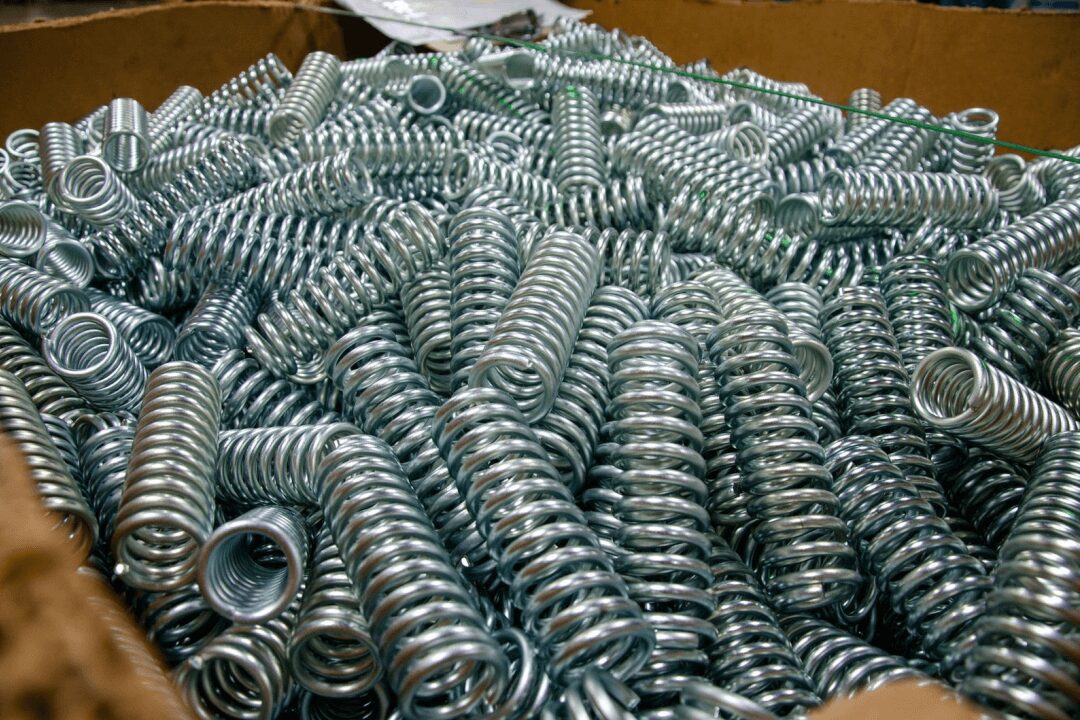When it comes to engineering and design, precision is paramount. And in the world of spring manufacturing, precision is not just a goal—it’s a necessity. Whether you’re in the automotive, industrial, or any other industry that relies on the proper functioning of mechanical systems, understanding the intricacies of spring and wire form design and manufacture is essential.
Springs and wire forms are the unsung heroes of countless mechanisms, supporting movement, providing tension, and ensuring the seamless operation of various devices. From small compression springs to complex wire forms, understanding how these components are made and how their design impacts functionality can make a world of difference.

Understanding Spring and Wire Form Specifications
The spring manufacturing process encompasses a range of dimensions and properties that define how a spring behaves and interacts with its environment. Each of these specifications plays a specific role in determining the spring’s mechanical characteristics, making it imperative to understand their significance.
- Wire Diameter:
The diameter of the wire used in spring manufacturing is a critical specification that directly affects the spring’s strength, flexibility, and overall performance. - Coil Diameter:
The diameter of the coil, or the distance between the centers of adjacent coils, determines the spring’s overall size and affects its spring rate and load-bearing capacity. - Free Length and Solid Height:
The free length of a spring is its length when not under load, while the solid height is its length when fully compressed. These specifications dictate the spring’s range of motion and its potential for compression and expansion. - Pitch and Number of Coils:
The pitch is the distance between adjacent coils, and the number of coils contributes to the spring’s behavior and characteristics. These specifications impact parameters such as spring rate and load distribution. - Load-Bearing Capacity:
The load-bearing capacity of a spring is the maximum force it can withstand without permanent deformation. This specification is critical for ensuring the spring can handle the loads it will experience in its intended application. - Spring Rate:
The spring rate, also known as stiffness or constant, indicates the relationship between force and displacement for a spring. It defines how much a spring will compress or extend under a given load. - Materials:
Springs are made from a variety of materials, such as steel alloys, stainless steel, or specialized materials for specific applications. Material specifications dictate the spring’s mechanical properties, corrosion resistance, and thermal characteristics. - Surface Finish:
The surface finish of a spring can impact its fatigue life, corrosion resistance, and interaction with other components. Specifications for surface finish ensure that springs meet the desired level of performance and appearance.

Meeting Spring and Wire Form Standards
In various industries, adherence to standards and specifications is non-negotiable. Springs and wire forms used in automotive, aerospace, and other critical applications must meet rigorous requirements. Western Spring Manufacturing’s expertise lies not only in creating custom components but also in ensuring that they comply with industry standards, providing you with reliable components that perform consistently.
- Material Inspection: The foundation of a high-quality spring is the material from which it’s made. Quality control starts with inspecting the raw materials for conformity to specified standards. The chemical composition, tensile strength, and other mechanical properties of the wire used for springs are assessed to ensure they align with the required characteristics.
- Dimensional Accuracy: Springs must adhere to precise dimensions to function correctly within their intended assemblies. Quality control involves using precision measurement tools to verify parameters such as wire diameter, coil diameter, and free length. Any deviations are promptly identified and addressed.
- Load Testing: Load testing involves subjecting springs to various loads and measuring their response. This process helps determine critical performance metrics such as load-bearing capacity, spring rate, and maximum compression. Load testing ensures that springs can withstand the forces they’ll encounter in real-world applications.
- Fatigue Testing: Springs are often subjected to repetitive loading and unloading cycles during their operational life. Fatigue testing involves applying cyclic loads to springs to evaluate their durability and predict their lifespan under real-world conditions.
- Visual Inspection: Visual inspection is a fundamental aspect of quality control. Skilled technicians examine springs for surface defects, cracks, or irregularities that might compromise performance. This step ensures that only visually flawless springs move forward in the production process.
- Torsion and Compression Tests: Depending on the type of spring, torsion and compression tests are conducted to assess the spring’s response to twisting or compressive forces. These tests help verify that the spring’s behavior aligns with the desired specifications.

Enhancing Spring and Wire Form Performance and Efficiency
Springs are versatile components that play a pivotal role in various mechanical systems. Whether they’re providing tension, absorbing shocks, or maintaining pressure, optimizing the performance of springs while also considering cost efficiency is a top priority. Fortunately, there are several ways to modify springs to achieve improved functionality and reduced overhead.
- Material Selection
The choice of spring material significantly influences its performance. While higher-grade materials might offer better fatigue resistance and longevity, they can also be more expensive. To strike the right balance between performance and cost, consider the specific requirements of your application. Evaluate factors such as load, cycle life, corrosion resistance, and environmental conditions to determine the most suitable material. - Design Optimization
Optimizing the design of a spring can lead to improved performance and reduced material expense. By working closely with engineers, you can refine aspects such as wire diameter, coil diameter, and pitch to achieve the desired spring characteristics. Computer-aided design (CAD) software allows for precise modeling and simulation, enabling you to visualize the effects of design changes before committing to production. - Heat Treatment and Processing
Heat treatment processes can enhance the mechanical properties of springs, improving their performance and extending their lifespan. Proper heat treatment can optimize the spring’s strength, fatigue resistance, and relaxation behavior. By selecting the appropriate heat treatment process for your application, you can achieve better performance. - Coating and Surface Treatment
Coatings and surface treatments can enhance a spring’s resistance to corrosion and wear. Depending on the application, choosing the right coating can extend the spring’s life and reduce maintenance. Coatings like zinc plating or powder coating can provide an added layer of protection, making springs suitable for challenging environments. - Prototyping and Testing
Investing in prototyping and testing can lead to performance improvements and cost savings in the long run. Prototypes allow you to validate the design and functionality of a spring before committing to full-scale production. Testing prototypes under real-world conditions helps identify potential issues early on, preventing delays and modifications in later stages. - Application-Specific Customization
Tailoring springs to meet the specific demands of your application can lead to both improved performance and longevity. By understanding the unique requirements of your application, you can collaborate with Western Spring Manufacturing to develop springs that precisely match your needs, eliminating unnecessary features and reducing production time.

Testing Performance and Capability in Various Spring Types
- Compression Springs:
Compression springs are tested through load testing, where a force is applied to the spring to measure its load-bearing capacity, spring rate, and compression characteristics. This helps determine how the spring behaves under different levels of compression and ensures it can handle the intended loads without permanent deformation. - Counter Balance Springs:
Counter balance springs, often used in applications like garage doors or industrial machinery, are tested similarly to compression springs. Load testing is employed to determine the spring’s ability to balance and counteract specific weights, ensuring smooth and controlled movement. - Die Springs:
Die springs, which are heavy-duty compression springs used in metalworking and stamping applications, undergo load testing to assess their load-bearing capacity and spring rate. These tests ensure that die springs can withstand the high forces involved in metal forming processes without failure. - Extension Springs:
Extension springs are tested by applying a load to extend the spring and measuring its characteristics such as spring rate and maximum extension. Load testing helps evaluate the spring’s behavior under tension and ensures it can stretch and return to its original position effectively. - Flat Springs:
Flat springs, also known as leaf springs, are tested for load capacity and deflection characteristics. This involves applying a force to the flat spring to assess its ability to flex and return to its original shape. The spring’s stiffness and behavior under load are crucial considerations. - Medical Coils:
Medical coils, used in devices like catheters and stents, are subjected to fatigue testing. This involves applying cyclic loads to simulate the stresses the coil would experience in a medical application. Fatigue testing ensures the coil’s durability and longevity in medical settings. - Torsion Springs:
Torsion springs are tested by applying torque or twist to the spring to measure its torque capacity and angular deflection. These tests assess the spring’s ability to store and release energy when subjected to twisting forces, ensuring its performance in applications like door hinges or clock mechanisms. - Wire Forms:
Wire forms are tested based on their intended function. For example, hooks or clips may undergo load testing to determine their load-bearing capacity and deformation characteristics. Other wire forms might be subjected to torsion testing to evaluate their ability to twist and return to their original shape.
Perfectly verified Springs and Wire Forms from Western Spring Manufacturing
Springs and wire forms might seem like humble components, but their impact on various industries is undeniable. With precision engineering, craftsmanship, and a commitment to quality, Western Spring Manufacturing produces custom springs and wire forms that exceed expectations.
Whether you’re looking for compression springs, extension springs, custom wire forms, or specialized components, partnering with experts who understand the nuances of design and manufacturing ensures that your projects benefit from high-quality, reliable components that perform optimally.

